Tekken 8 Heat Mechanics: Complete Guide to the Heat System
Updated On: November 12, 2025 by Aaron Connolly
Core Principles of Tekken 8 Heat Mechanics
Tekken 8’s Heat system really shakes up the pace, pushing players toward aggressive play by giving you a limited-use power boost. You’ll spot a blue gauge under your health bar—it’s your Heat, and you can only trigger it once per round for a quick 10 seconds of souped-up attacks.
What Is Heat in Tekken 8?
Bandai Namco swapped out Tekken 7’s Rage Drive for Heat in this game. The blue bar sits right under your health meter, waiting for you to use it.
Pop Heat and your character glows with a blue aura. The Heat bar turns purple as soon as it’s live.
Key Heat Features:
- You can only use it once each round.
- It lasts 10 seconds once you turn it on.
- The timer stops if you hit or knock down your opponent.
- Heat resets completely between rounds.
Unlike old Tekken mechanics, Heat doesn’t kick in when you’re low on health. You decide when to use it.
This system gives you tactical options. Maybe you’ll save it for a clutch moment, or maybe you’ll go in early for momentum.
How Heat System Drives Aggressive Play
Heat really rewards players who keep moving forward and put on the pressure. It’s not a system for turtling up.
Chip Damage on Block: Attacks during Heat deal recoverable damage even if your opponent blocks. The only way for them to get that health back? They have to fight back and land a hit.
Defensive players can’t just block forever. They actually have to take risks now.
Enhanced Mobility: Heat Dash lets you close the gap fast after activating Heat. If someone tries to back away, you can catch them.
Limited Duration: With just 10 seconds on the clock, you’ve gotta make your moves count. There’s no time to waste.
If you land hits, the timer pauses. So, if you’re aggressive, you can squeeze even more value out of your Heat.
Visual Indicators: Heat Bar and Timer
If you want to manage your Heat well, you need to watch the visual cues.
Heat Bar States:
- Blue (Inactive): Ready to go.
- Purple (Active): Heat is running.
- Empty: You spent it for this round.
That blue aura around your character? That’s a dead giveaway that Heat’s on. Both players can see it from anywhere on screen.
Timer Display: When you activate Heat, a countdown clock shows how many seconds you’ve got left.
The bar drains as you use Heat. If you use Heat Smash, it burns up the whole thing instantly.
These cues help you keep track of your own Heat and your opponent’s. If you know they’ve already used Heat, you can plan your next move without worrying about surprise power plays.
Activating Heat: Heat Burst and Heat Engager
Tekken 8 gives you two ways to fire up the Heat system—Heat Burst and Heat Engager. Both fill your Heat bar differently and let you approach matches in your own way.
How to Use Heat Burst
Heat Burst works for every single character. Just press 2+3 together (Right Punch + Left Kick).
You’ll do a big smash attack that instantly puts you into Heat mode. Doesn’t matter if you hit or get blocked—it’s still pretty safe.
Key Heat Burst Benefits:
- Fills about 70% of your Heat bar.
- Gives you frame advantage whether it lands or gets blocked.
- Can be used mid-combo for extra hits.
- Stays active for 10 seconds.
- Lets you extend combos with another bound.
Changed your mind? Cancel Heat Burst by tapping back twice (bb). That flexibility really helps when the match pace changes.
Heat Burst shines in combos. Players often use it to keep the damage going after launching someone.
Explaining Heat Engager Moves
Heat Engager moves are unique to each character. They’re special attacks that kick off the Heat system and come with their own flair.
Usually, these moves launch your opponent and trigger an auto dash. You get great position and new combo opportunities.
Heat Engager Advantages:
- Fills your Heat bar all the way (100%).
- Lasts 15 seconds—longer than Heat Burst.
- Sometimes heals a bit of recoverable health.
- Pushes opponents way back.
- Makes you dash straight at your opponent.
Each fighter’s Engager is different. Some are command grabs, some are launchers, others work as counter-hits.
The built-in dash keeps you in your opponent’s face. It’s great for keeping up the pressure.
Heat Activation Timing Tips
Getting your Heat activation timing right can flip a match. Try to use Heat when you can actually make the most of those 10-15 seconds.
Best Activation Moments:
- Right before your opponent stands up from a knockdown.
- In the middle of a combo to rack up damage.
- When you’ve got frame advantage after a block.
- During a pressure string to keep momentum.
Don’t blow your Heat activation from full screen. The clock still ticks down even if you’re not fighting.
Treat your Heat bar like it’s gold. You only get one shot per round, so use it when it matters.
A lot of veterans hang onto Heat for comebacks. The extra damage and chip can turn a losing round around fast.
Combat Actions Within Heat State
Once you’re in Heat, you unlock three main offensive tools: Heat Dash for fast movement and combo extensions, Heat Smash for big damage, and powered-up character moves. These all eat up your Heat bar but can swing the match in your favor.
Performing Heat Dash
Heat Dash lets you cancel almost any move into a quick forward dash. It’s a great way to keep combos going and stay on top of your opponent.
To do it, just press forward (f) after landing any non-throw Heat Engager move. Your character dashes in with a blue glow.
Key Benefits:
- Lets you extend combos, especially with long wall carry.
- Opens up mix-ups if your first attack gets blocked.
- Works even if your opponent is in the air.
- Gives you frame advantage as they recover.
In normal matches, Heat Dash burns up all your remaining Heat. In Story Mode, it only takes a sixth of your bar.
Heads up: If you use Heat Dash in the same combo as Heat Burst, your opponent gets thrown to the ground, not the usual effect.
Executing Heat Smash
Heat Smash is your big finisher during Heat. It hits hard and ends your Heat state right away.
Press Heat + 2+3 to unleash your character’s unique Heat Smash. Each fighter’s version has its own quirks and damage numbers.
Heat Smash Advantages:
- Breaks floors or walls with a single hit.
- Triggers stage effects instantly.
- Works a lot like the old Rage Drive.
- Can’t be interrupted once you start it.
Some fighters have extra Heat Smash moves with different inputs. Check the move list if you want to get fancy.
Timing matters with Heat Smash. Use it to close out combos or punish unsafe moves for the best results.
Heat-Specific Special Moves
Every character gets powered-up moves during Heat. Some hit harder, others unlock new tricks.
Common Enhancements:
- Chip damage: All attacks deal 30% chip through blocks.
- Move properties: Certain attacks get new effects or more damage.
- Stance buffs: Some stances become stronger or easier to access.
A few examples:
- Devil Jin: Can use Electric Wind God Fist without perfect timing.
- Kazuya: Unlocks extra Devil moves.
- Jin: Gets Awakened Power Stance and Awakened Black Wing.
- King: Jaguar Sprint gains Power Crush.
Some characters can even restore Heat time with certain moves or counters. That can stretch your Heat for more than 10 seconds.
Quick tip: Figure out which of your character’s moves get buffed in Heat. Those are usually your best bets for damage and pressure.
Heat Energy Management
If you want to stand out in Tekken 8, you’ve gotta manage your Heat energy smartly. The bar refills every round, but knowing when to go all-in or hold back can decide the match.
Understanding Heat Energy Usage
Heat energy drains depending on what you do and how the round goes. Once you start it, the bar lasts at least 10 seconds, and it won’t tick down while your opponent is getting hit or lying on the ground.
Heat Dash eats up Heat differently:
- In regular matches, it uses up all your Heat.
- In Story Mode, it only takes a sixth.
Taking damage from your opponent also chips away at your Heat bar. So, there’s always a gamble when you go in hard.
Key consumption points:
- Heat Smash drains all your Heat.
- Heat Dash varies by game mode.
- Taking hits cuts your Heat time.
- Some fighters can get a bit back with special moves.
Characters like Azucena and Lee can restore some Heat with special commands. That gives them more options for managing Heat than most.
Strategic Consumption for Maximum Damage
If you want to cash in on big combos, save your Heat for high-damage chances instead of popping it right away.
Optimal times to spend Heat:
- Extending combos for extra wall carry.
- Securing kills with Heat Smash.
- Escaping pressure with Heat Dash.
- Buffing your character’s special abilities.
Heat Smash does huge damage and breaks stages instantly. Hold onto it for moments when you know your opponent can’t get away.
Strategic priorities:
- Make sure your combo will land before spending Heat.
- Use Heat Dash to keep up the pressure.
- Save Heat Smash for the finish.
- Think about your opponent’s health before you activate.
Heat becomes even more valuable when your opponent hits Rage mode. The chip damage and mix-ups can really mess with their defense.
Combos and Offence During Heat
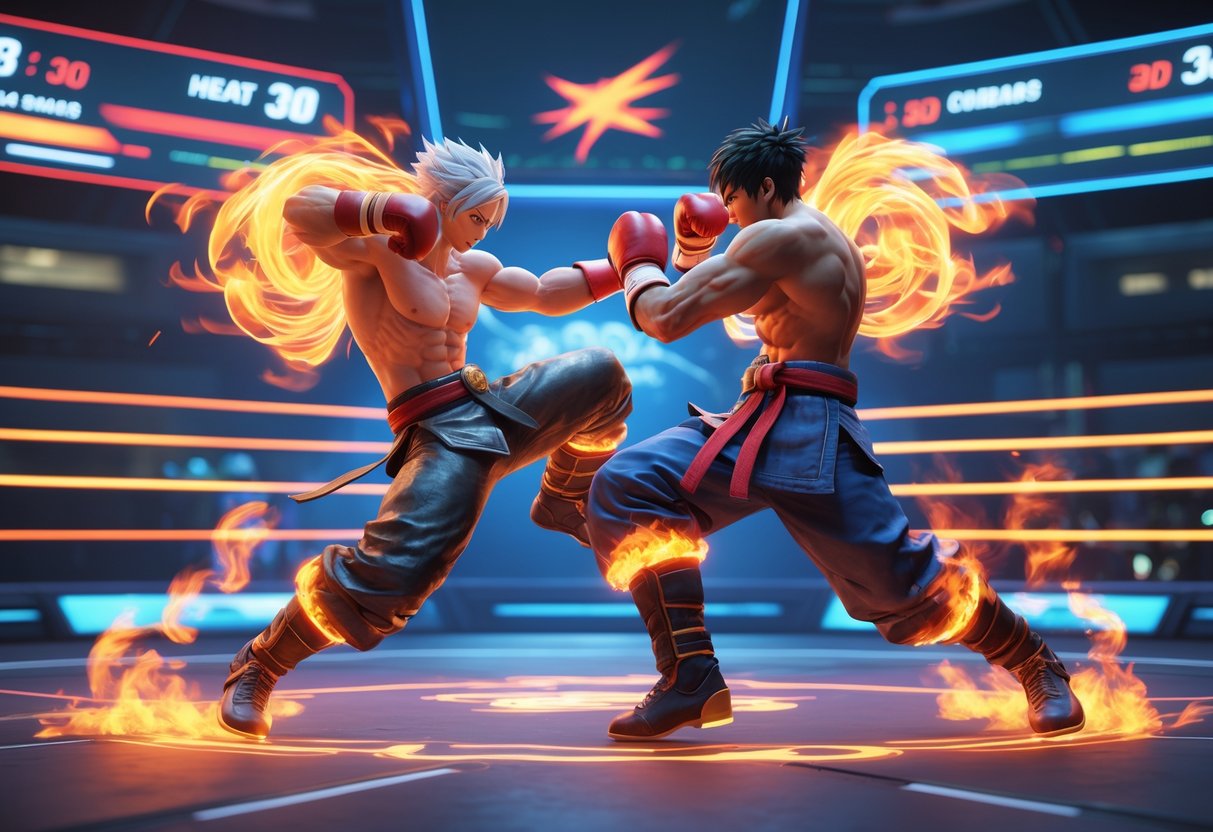
Heat changes your offense game by giving you new combo routes and better pressure tools. You can drag out combos, break through blocks with chip damage, and make it tough for opponents to defend.
Creating Offensive Pressure
Heat state opens up lots of ways to keep your opponent stuck. Heat Burst attacks have Power Crush, so they’ll absorb incoming hits while you swing.
That makes them great for breaking through someone’s pressure. Even if your Heat Burst gets blocked, you still get frame advantage.
Heat Engagers work differently but get similar results. These special moves activate Heat as soon as they connect.
The big thing is the auto rush forward after you land one. You close the gap right away and get frame advantage for your next attack.
If your Heat Engager gets blocked, don’t worry. You can chain into Heat Dash by hitting another Engager right after.
This keeps you in your opponent’s face and doesn’t let them get comfortable blocking. Eventually, they’ll have to take risks on defense.
Combo Extensions with Heat
Heat really changes up combo routes in ways you just don’t see in the regular state. A lot of characters suddenly get access to moves that make combos twist in new directions.
You can link standard launchers into Heat-only follow-ups for that extra burst of damage. With this extended combo potential, it makes sense to save Heat for moments when you know a launcher will connect.
Heat Smash is your ultimate combo ender. You’ll burn all your remaining Heat time, but the damage makes it worth it.
Try not to throw out Heat Smash randomly since it ends your Heat state right away. Wait until you’re sure the combo will land, or when your Heat time’s about to run out anyway.
Heat Dash lets you create unique juggle opportunities right in the middle of a combo. After you land a Heat Engager during a string, you can Heat Dash to mess with your opponent’s falling behavior.
This opens up juggle routes that simply wouldn’t work otherwise. It’s worth practicing your character’s Heat Dash setups to squeeze out every bit of combo damage.
Recoverable Gauge and Chip Damage
Heat attacks chip away at your opponent’s health even if they block, leaving a recoverable gauge—a grey chunk on their health bar. If they hit you back, they can restore this lost health.
But the psychological pressure ramps up instantly. Your opponent sees their health melting away and knows they have to take risks to get it back.
Heat Engagers restore your own recoverable gauge by a good amount. This sets up a strong risk-reward dynamic, where landing Heat attacks heals you and hurts them.
After you trigger a Heat Engager, the automatic forward movement ensures you’re close enough to take advantage of that health recovery. Try to plan your Heat usage for those moments when you really need to get some health back.
Recoverable gauge pops up whenever your opponent takes damage in the air or while they’re knocked down. Your Heat combos naturally put them in these situations.
So, when you land a solid Heat combo, you not only deal direct damage but also create a chunk of recoverable health that your opponent will struggle to reclaim safely.
Comparing Tekken 8 Heat Mechanics With Tekken 7
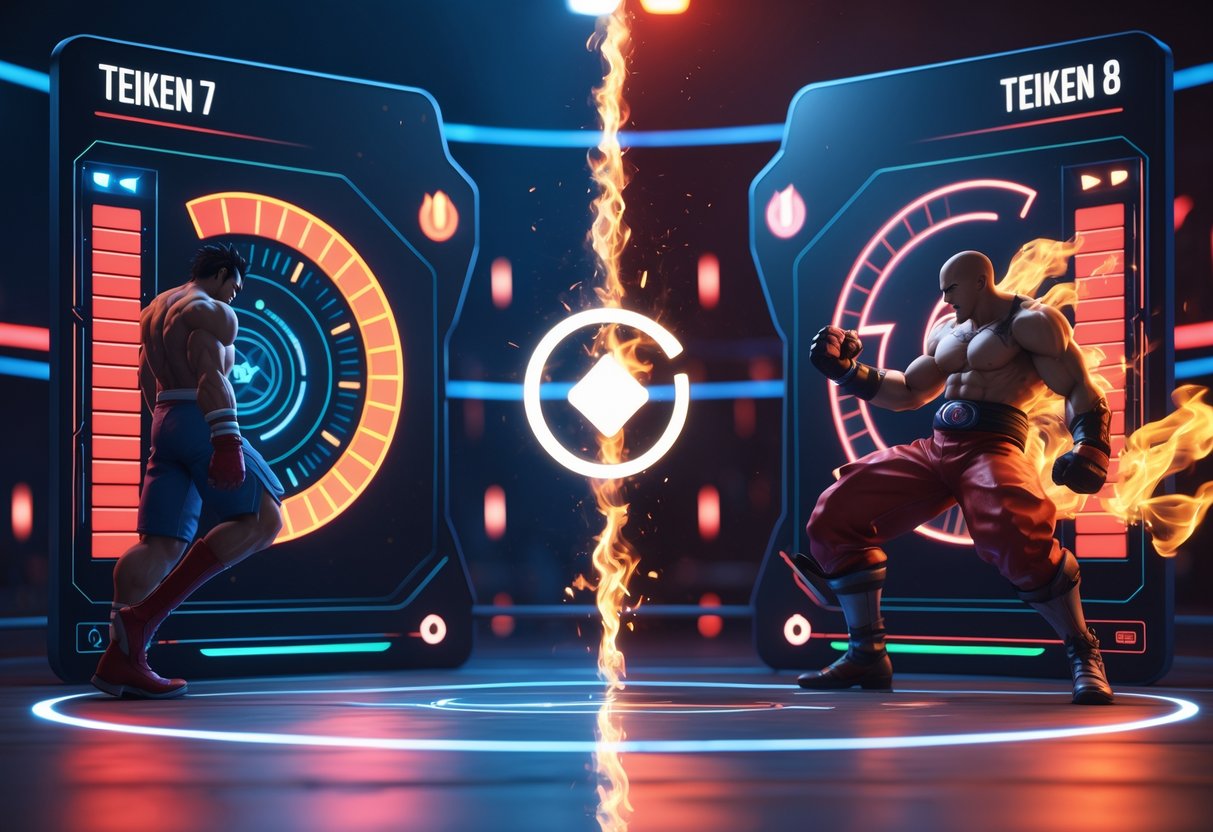
Tekken 8’s Heat system marks a big shift from Tekken 7’s Rage Drive mechanics. Now, you get more chances to go on offense, and Heat resets every round. The new system changes how we approach matches, since you can use Heat from the start of every round instead of waiting for your health to drop.
Differences from Rage Drive
Tekken 7’s Rage Drive only kicked in when your health dropped below 25%. This made for some wild comeback moments, but honestly, it didn’t give you many options during the rest of the fight.
Heat mechanics flip the script:
- Available right from the start of the round—no need to be low on health
- Resets every round—fresh Heat every time
- You can activate it in several ways—Heat Burst, Heat Smash, or special moves
- Movesets get upgraded—new combo extensions and guard breaks
Timing changes everything here. Rage Drive rewarded you for playing defensively until you got low on health, but Heat pushes you to get aggressive right away. Players are popping Heat in the first few exchanges instead of saving it for a last-ditch effort.
Key differences at a glance:
| Tekken 7 Rage Drive | Tekken 8 Heat |
|---|---|
| Health-dependent activation | Available at round start |
| One use per health drop | One use per round |
| Comeback mechanic | Aggressive tool |
| Limited move variety | Character-specific enhancements |
Evolution From Previous Series Mechanics
Heat takes some ideas from older Tekken games but brings in new twists. Tekken 7 gave you one big attack with Rage Drive. Now, Heat gives you a whole stretch of offensive pressure.
You’ll notice a few key changes:
- Regular moves get better frame data during Heat
- Chip damage is now a thing, which Tekken 7 didn’t really have
- Unique Heat abilities for each character, matching their style
- More combo extension options—not just a damage boost
Heat mixes up the flow. Instead of waiting for one big hit, you get a whole period where your moves are safer and more rewarding. It encourages you to keep up the pressure, rather than banking on a single clutch attack.
The system also tackles Tekken 7’s overly defensive play. With chip damage and improved frames, blocking isn’t as safe anymore, so both players have to stay active the whole round.
The Role of Rage Art and Rage System
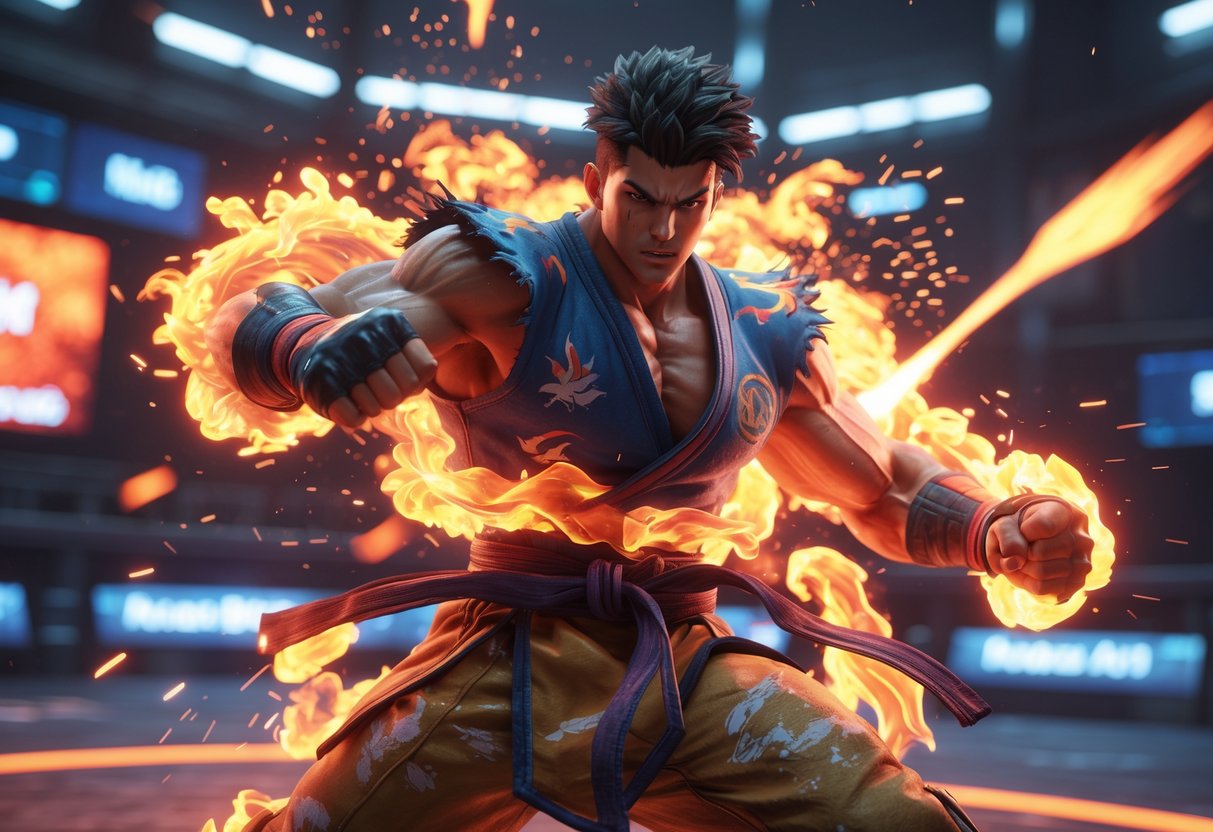
The Rage system works hand-in-hand with Heat mechanics to set up those big comeback moments in Tekken 8. Both systems activate when you’re low on health, but they do different things, and you can use them together if you play it right.
Interplay Between Rage System and Heat
Rage kicks in automatically when your health gets low. Unlike Heat, you can’t just turn on Rage whenever you want.
Rage Drive is gone in Tekken 8. The developers replaced it with the new Heat mechanics.
Rage Art now uses a universal input: down-forward + 1+2. Every character does it the same way.
You can pop Heat while you’re in Rage state. That combo lets you pile on some serious offensive pressure.
When both are active, you get access to:
- Rage Art for huge damage
- Heat Burst and Heat Engager
- Heat Smash
- Your character’s unique Heat abilities
The two systems work together. Rage gives you the high-damage finisher, while Heat lets you keep up the pressure and extend combos.
Executing Rage Art Versus Heat Smash
Rage Art is your big, round-ending attack. You don’t need any meter, but you only get one shot per round, and only at low health.
Heat Smash burns all your Heat energy, but you can use it as many times as you enter Heat. You can do it with one or two bars of Heat.
Here’s how they stack up:
| Aspect | Rage Art | Heat Smash |
|---|---|---|
| Activation | Automatic when low health | Manual Heat activation required |
| Cost | No meter cost | All Heat energy |
| Frequency | Once per round | Multiple times during Heat |
| Damage | Extremely high | High but variable |
Go for Rage Art when you need that guaranteed big hit to close out a round. Use Heat Smash for combo extensions and to keep up the pressure.
Both moves can be blocked, so you have to pick your spots and set them up right.
Character Variations and Special Style
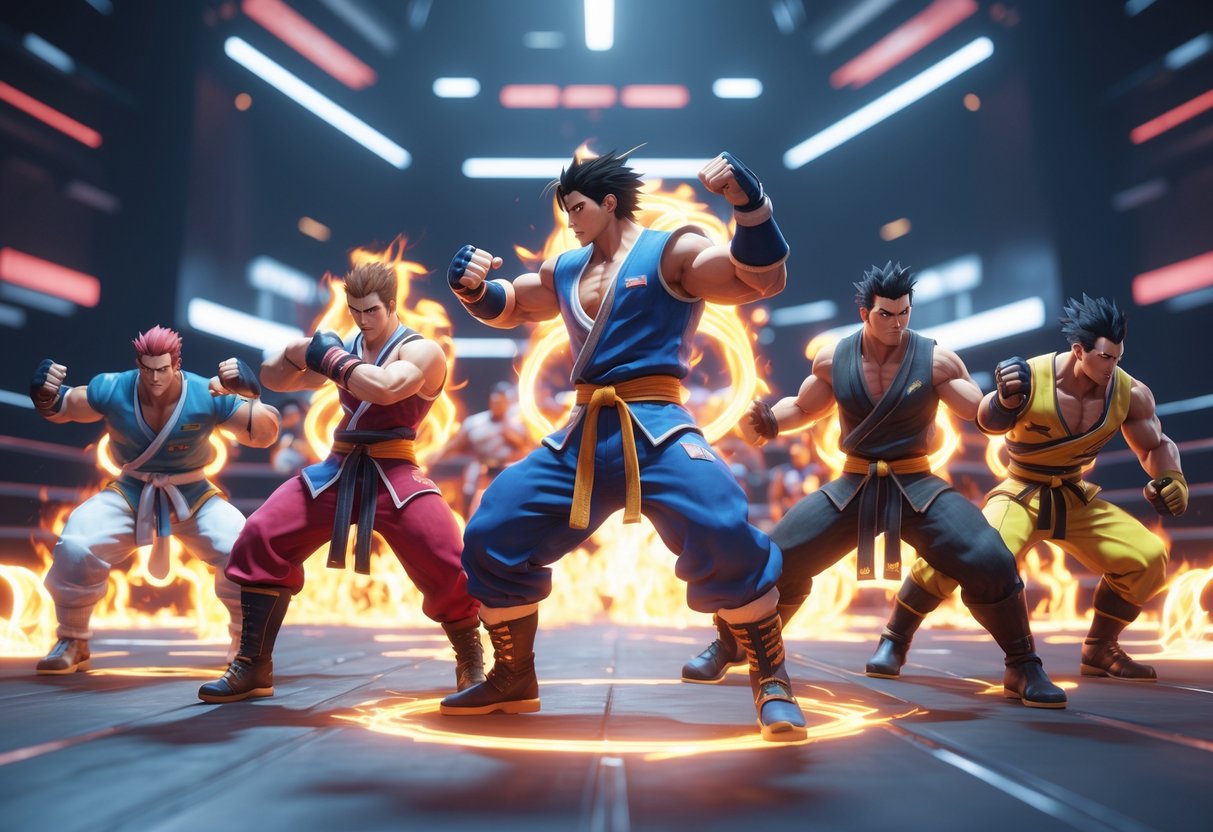
Every character in Tekken 8 gets something special in Heat mode, and Special Style makes it easier for newcomers to use these powered-up moves. Special Style turns complicated inputs into single-button presses, so you can try out Heat mechanics without needing to master every command.
Impact on Character-Specific Moves
Heat mode shakes up each character’s moveset in its own way. Jin Kazama can use Electric Wind Hook Fist without worrying about tight timing, and Kazuya gets easy Electric Wind God Fists during Heat.
Some fighters get better stances. Bryan Fury unlocks Snake Eyes moves without the usual limits. Claudio can spam Starburst moves for the whole Heat duration.
A few characters pick up brand new moves. Devil Jin pulls out Annihilation Beam from certain attacks. Feng Wei can use Essence of Iron Palm and lightning attacks.
Chip damage goes way up for a lot of characters in Heat. Alisa’s chainsaws hurt more even on block. Nina’s handgun moves get scarier.
Heat also changes how some characters use resources. Azucena can refill her Heat gauge with coffee-themed moves. Lee gets more Heat time when he lands Just Frame attacks.
Utilising Special Style Controls
Special Style makes Heat activation and management dead simple. You can hit one button for Heat Bursts, Heat Dashes, and character buffs instead of tricky inputs.
You’ll see on-screen prompts for Aerial Combos, Power Crushes, and Heat Bursts. This makes it a breeze for beginners to try out each character’s Heat tricks.
Special Style especially helps with characters who have complicated Heat mechanics. Reina’s Lethal Fury is easier to pull off, and Victor’s sword moves don’t need perfect timing.
Heads up: Special Style does limit some advanced tricks that need precise timing. Most experienced players stick with classic controls for full flexibility.
But the system keeps things fair. Damage and frame data stay the same—only the input method changes, so the strategic depth of Heat remains for every character.
Platform Differences and Accessibility
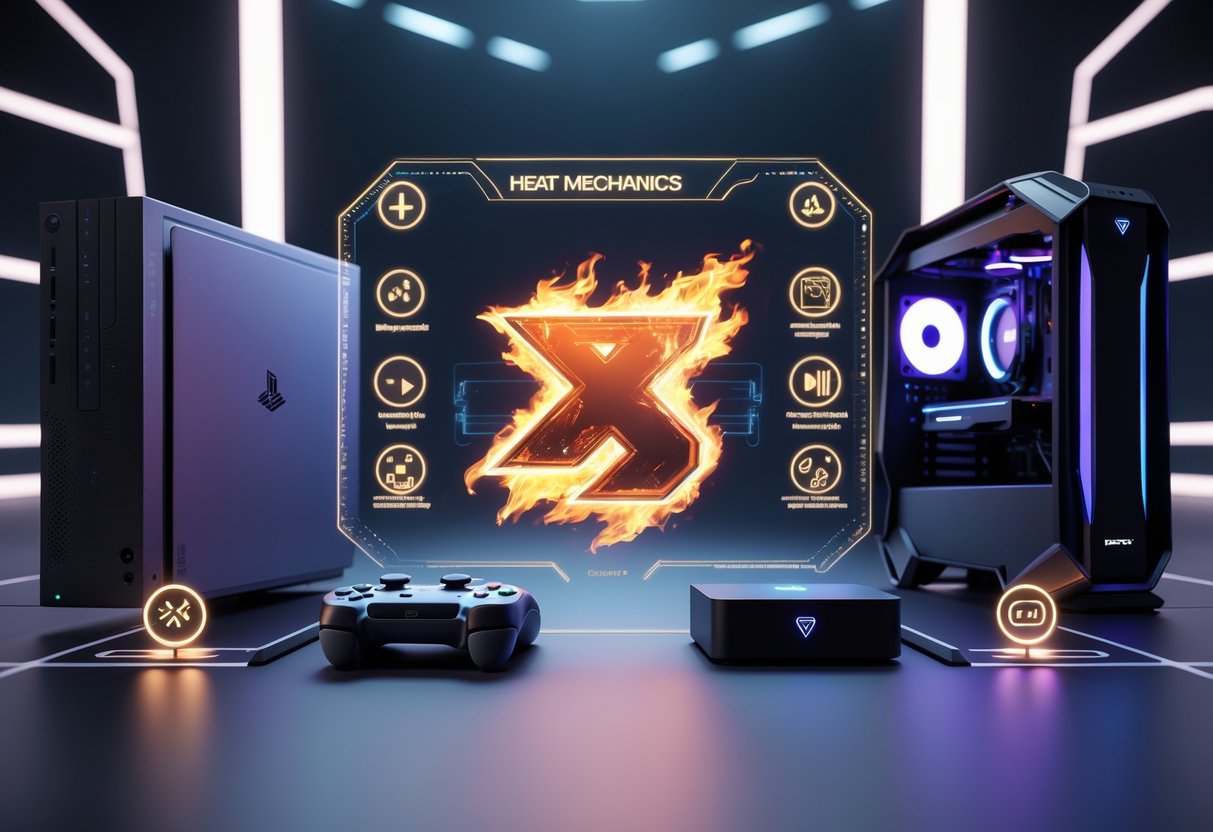
Heat system controls are a bit different between PlayStation 5 and PC, but the mechanics themselves don’t change. Most accessibility features carry over, but each platform offers something unique for different players.
Heat Controls on PlayStation 5
On PlayStation 5, the DualSense controller adds a little flair to Heat system gameplay. You enter Heat by pressing R1 + Square, and the controller’s haptic feedback lets you know it worked.
You hit Triangle + Circle for Heat Smash. The DualSense gives you a different vibration for Heat mode, which is actually pretty cool.
Quick Heat Controls:
- Heat Activation: R1 + Square
- Heat Dash: Forward, forward while in Heat
- Heat Smash: Triangle + Circle
- Heat Burst: R1 + Triangle (for defense)
The adaptive triggers push back a bit during certain Heat attacks, which helps you feel the timing for max damage.
PlayStation 5’s Activity Cards track your Heat stats. You can check your Heat efficiency and get tips through the console’s interface.
Using Heat System on PC and Steam
On PC, you map Heat activation to any key you want in the settings. Most folks use E or F for quick access.
Steam supports Xbox, PlayStation, and arcade stick controllers. If you want the most precise Heat timing, arcade sticks are a solid pick.
PC Perks:
- Higher frame rates mean better Heat timing
- Tons of controller options
- Custom key binds for Heat moves
- Less input lag on gaming monitors
Steam’s overlay tracks your Heat usage during matches. You can watch replays to see where you used Heat well—or not.
PC players get less input delay than consoles. That edge matters when you need frame-perfect Heat combos.
Competitive Strategies for Using Heat
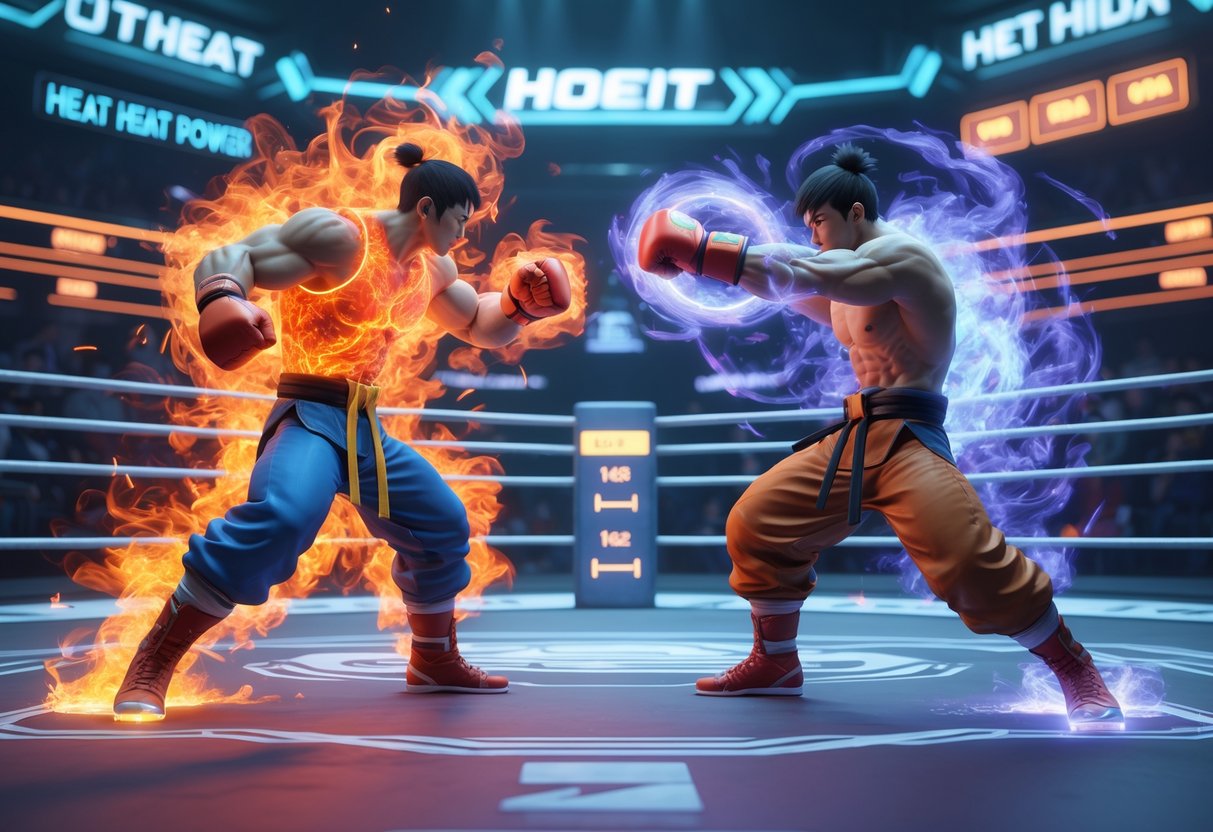
Smart Heat usage can flip a match on its head. Knowing when to go into Heat—and how to defend against it—separates the good from the great.
Timing Heat Activation for Advantage
The best time to hit Heat is during a combo opportunity or when your opponent screws up and leaves themselves open. Wait for those moments when you can get the most out of it.
Early Round Activation Starting Heat early puts your opponent on the back foot. If you already have a life lead, it’s a good way to keep control.
Mid-Combo Heat Burst Pop Heat Burst during air combos to tack on extra damage. This lets you use the full 10 seconds of Heat while your opponent’s still getting juggled.
Punish Opportunities If your opponent whiffs or throws out something unsafe, activate Heat. They can’t get away, so you get all that Heat damage for free.
Heat Bar Management Don’t waste Heat on single pokes. Always look for chances to string together multiple attacks during Heat.
Defensive Play Against Heat Pressure
When your opponent’s in Heat, blocking matters more than ever because chip damage adds up fast. Stay patient and don’t get greedy with counter-attacks.
Movement and Spacing Backdash and sidestep to dodge Heat Dash pressure. Keep your distance to cut down on chip damage.
Safe Pokes Only Don’t take risks with unsafe moves during their Heat. Stick to quick, safe attacks that won’t leave you open to counters.
Heat Dash Counters Watch for Heat Dash—people get predictable with it. Be ready to duck or sidestep when you see it coming.
Wait It Out Heat only lasts 10-15 seconds. Sometimes the best move is just to defend and let their Heat run out.
Training and Mastery of Heat System
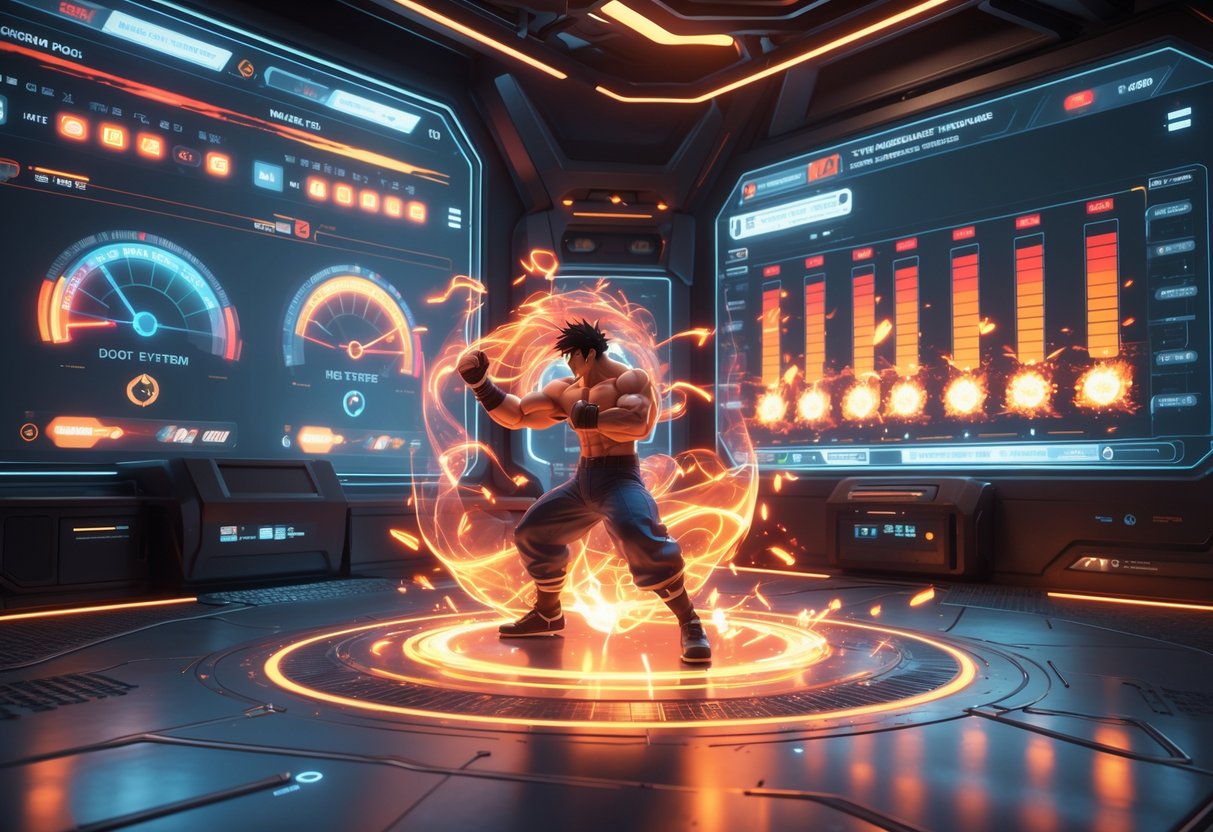
If you want to master Heat, you’ll need to spend real time in training mode and get a feel for when to trigger this mechanic. It’s all about figuring out which moves link up best and building that muscle memory so you can pull it off fast in the heat of battle.
Practising Heat Actions in Training Mode
Training mode lays the groundwork for using Heat well. Jump in and try out the basic activation methods with your favorite character.
Set the dummy in different spots and work on Heat Burst timing. Try pressing Right Punch and Left Kick (2+3) during combos and see when it lands clean. You’ll get frame advantage whether it hits or gets blocked.
Now, zero in on your character’s Heat Engagers. These moves are different for every fighter, but they usually launch the opponent across the screen. Only standing opponents will trigger them, so keep that in mind.
Drill the timing for Heat Smash in your combos. This move burns all your remaining Heat for a big burst of damage. Try ending combos with 2+3 to squeeze out every bit of damage.
Quick win: Just 15 minutes a day practicing Heat activation in different combos will do wonders for your muscle memory.
Developing Advanced Heat Tactics
Once you’ve got the basics, you’ll want to get more from your 10-second window and put real pressure on your opponent. The Heat Timer pauses when you land hits or knock them down, so stay aggressive to stretch out your advantage.
Start using Heat Dash. If you’re already in Heat State, hit a Heat Engager while pressing forward and you’ll dash right at your opponent. This keeps your offense going and can catch people backing away.
Figure out which of your moves get powered up in Heat State. These enhanced attacks deal recoverable damage even on block, so they force your opponent into awkward spots. It’s worth studying your character’s list.
Try activating Heat right in the middle of combos instead of at the start. This way, you won’t waste it on nothing and you’ll keep the pressure on.
Warning: Don’t blow Heat on single hits. Save it for long combos or moments where you know you can follow up.
Think about the mind games, too. If you activate Heat when your opponent’s low on health, you might make them panic and mess up.
Future Implications and Updates for Heat Mechanics

Bandai Namco keeps tweaking the Heat system as they listen to community feedback and watch tournament data roll in. Recent updates really show they’re serious about fine-tuning this mechanic with regular patches.
Possible Adjustments in Future Patches
We’re probably going to see more changes to Heat mechanics soon. Some Heat engager moves still give certain characters too much of an edge, and that’s likely on the devs’ radar.
The team has shown they pay attention to what players say. Season 2 already shook up the Heat system because people spoke up.
Potential future changes include:
- Tweaks to Heat engager damage scaling
- Adjusted rates for building the Heat gauge
- Maybe new defensive Heat options
- Character-specific balancing for Heat moves
Bandai Namco tends to drop balance patches every few months. With how important Heat is, you can bet it’ll stay a main focus.
Tournament results and pro play really shape these decisions. Developers rely on that data to spot which Heat mechanics need fixes.
Bandai Namco’s Role in Gameplay Evolution
Bandai Namco keeps a close eye on Heat mechanic feedback from the community. They watch player discussions and tournament outcomes to help steer their decisions.
Here’s how they do it:
- Regular patch cycles that tackle Heat balance
- Engaging with the community on social media and forums
- Consulting pro players to keep things fair
- Digging into data from ranked matches and tourneys
They don’t just tweak numbers, either. If they need to, they’ll overhaul Heat mechanics completely—Season 2 already proved that.
It feels like we’ll keep seeing updates to Heat throughout Tekken 8’s life. Bandai Namco’s history suggests they’ll stick with this responsive approach for a long time.
Frequently Asked Questions
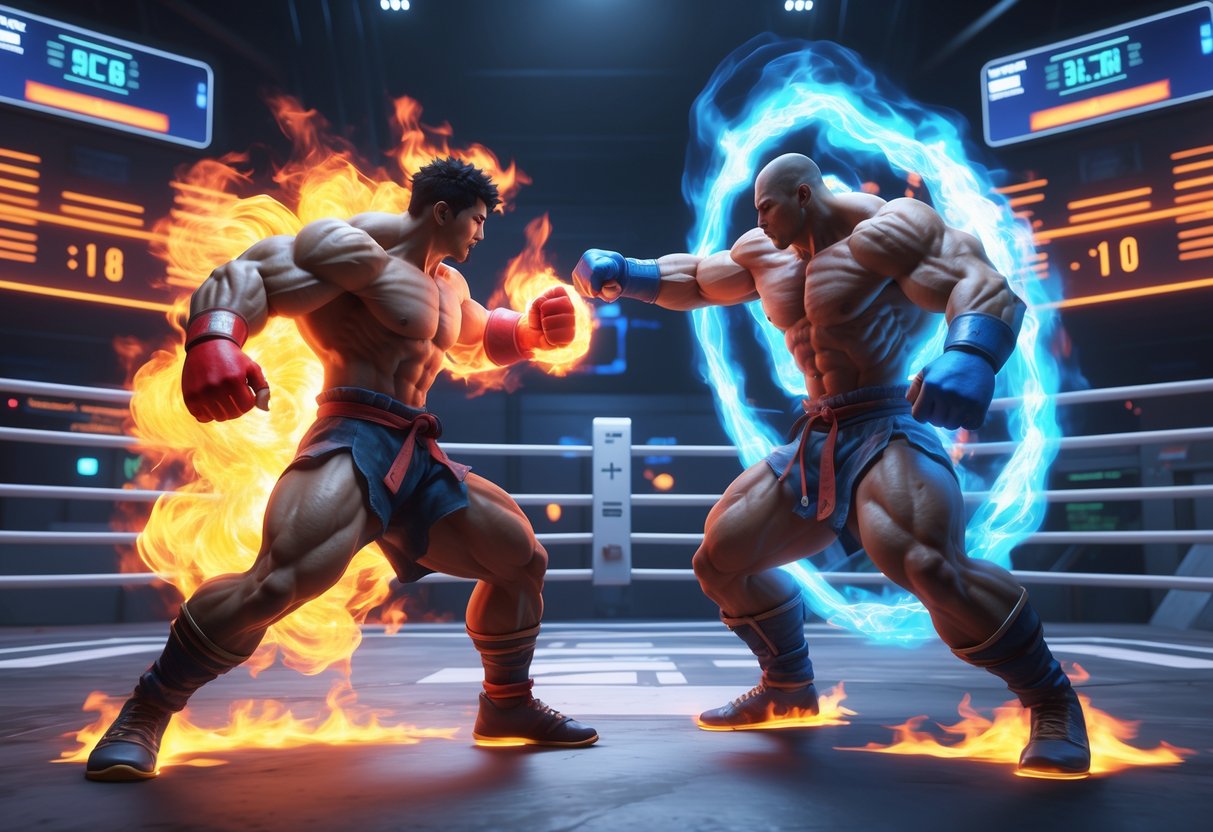
Lots of players have questions about when to use Heat, which characters get the most out of it, and how to defend against it. The Heat system really touches every part of Tekken 8’s combat.
How do you activate the new Heat system in Tekken 8 during a match?
You’ve got two ways to activate Heat in a match. First, you can hit 2+3 for a Heat Burst—this smashes your opponent and puts them in a kind of bound state.
The second way is through Heat Engagers. These are unique moves for each character that trigger Heat when they hit a standing opponent. You’ll spot a blue glow on your character’s limb when you use them.
Heat Burst acts as a Power Crush, so it’ll absorb attacks during startup, but it only dishes out recoverable damage.
If you want to skip the Heat Burst attack, just press back, back before it comes out. That way, you enter Heat mode without the big animation.
What characters benefit most from the Heat mechanic in Tekken 8?
Mishima fighters really shine with Heat. Kazuya can turn into Devil form and bust out Devil Blaster and Inferno. Heihachi gets Electric Wind God Fist without needing perfect timing.
Jin and Reina both get big Heat bonuses. Jin unlocks Awakened Power Stance, and Reina gets to use Lethal Fury.
Stance-heavy characters get a lot, too. Claudio gets Starburst moves on demand, and Bryan can use Snake Eyes without needing resources.
Jack-8 also picks up stronger Gamma Charge moves, plus Heat brings back his health during Gamma Howl absorption.
Are there any unique combos that are only possible with the Heat system?
Heat Dash lets you extend combos you just can’t do otherwise. If you land any non-throw Heat Engager, press forward and you’ll dash in to keep the combo going.
Heat Burst in the middle of a combo puts the opponent in a special bound state. That means you can keep the combo alive when it would usually be over.
Heat Smash finishers hit like a truck and trigger stage effects in one shot. They’ll break walls and floors instantly, instead of taking two hits.
Some characters get totally new combo options, too. Devil Jin, for example, can chain Annihilation Beam from certain moves and rack up huge damage.
Can you explain how the Heat gauge fills up and what actions increase it the fastest?
The Heat gauge fills up automatically at the start of each round. There’s no need to charge it up or build it during the match.
Every character gets one full Heat activation per round. Once you use Heat Burst or a Heat Engager, the gauge starts ticking down for at least 10 seconds.
If you take damage while in Heat, your timer drops faster. The clock pauses when you knock your opponent down or hit them, though.
Heat Dash and Heat Smash both use up the gauge. Heat Dash burns whatever’s left, and Heat Smash empties it completely.
What defensive strategies can you employ against an opponent using the Heat mechanic?
Try stepping around Heat Burst since the patch made them sidesteppable. Attack Reversals, Parries, and your own Power Crushes can beat Heat Burst on startup.
Keep a bit of distance when the opponent enters Heat. They’ll get chip damage on moves that were safe before, so blocking isn’t always the best answer.
Watch out for Heat Dash cancels after you block something. They might dash in to keep up the pressure, so be ready to challenge or step away.
Low attacks and throws work well to break up Heat pressure. These options usually catch people trying for powered-up mids or highs.
In what ways has the Heat system changed the overall strategy and gameplay of Tekken 8?
Now, rounds really revolve around Heat timing and how you manage your resources. You have to decide when to hit that Heat activation for the biggest payoff, instead of just holding onto it forever.
If you play aggressively, the game rewards you a lot more because of Heat mechanics. Moves get enhanced, chip damage adds up, and the players who keep up the pressure see the benefits.
Wall and floor breaks happen all the time now, thanks to Heat Smash. Stage positioning matters way more, since a single hit can suddenly trigger big environmental damage.
Heat states have totally shifted character matchups. Some fighters get a lot stronger when they’re in Heat, so the old tier lists don’t always hold up.
Combos feel more creative, too, with Heat letting players extend damaging sequences that weren’t possible before.

